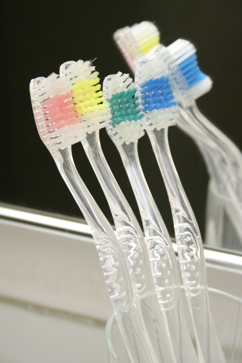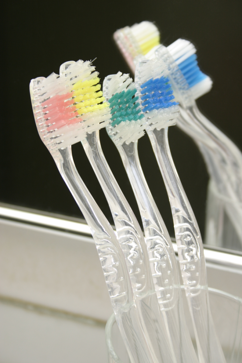When to Replace Your Toothbrush and How to Choose a New One


You probably already know that it is important for the health of your teeth to brush them at least once a day and much better if done twice a day – once in the morning and once before bed.
However, if you are like most people, you probably have not given much thought to when you need a new toothbrush, or to what type is best for you. Nonetheless, these questions can have a significant impact on your dental health.
There is no one set time period that will apply to every person and situation about when to replace a toothbrush. Generally speaking, however, most toothbrushes will last for about three months. The exact time period will vary depending on factors like the quality of the brush and the vigor with which you use it. If the bristles on your brush begin to point in multiple directions, it is a safe bet that it is time for you to replace it. Some brushes include sections or strips that change color when the brush needs to be replaced. If your brushes do not included this feature and you find it difficult to remember when you need to switch out your toothbrush, simply start using a new one on the first day of every new season.
If you have a cold, the flu or some other type of illness, it is a wise precaution to replace your toothbrush after you feel better, even if your brush did not yet need to be replaced otherwise. Most likely, the germs would die on their own if you take proper care of your toothbrush, but it is certainly better to err on the side of caution to reduce your chances of getting sick again.

When it is time for a new toothbrush, make sure you choose the right one. You might think that the stiffest, strongest bristles you can find will do the best job of cleaning and polishing your teeth. Actually, however, you should choose a soft or medium-bristled brush; it will do a better job of removing plaque, food particles and the like from your teeth, and it will be less likely to damage or injure your gums. In addition, you should choose a smaller brush head if possible, since it will be more maneuverable and less likely to miss sections of your teeth.
When it comes to maintaining your toothbrush, the most important step is simply to store your brush somewhere that allows it to dry completely between brushes. Any germs that might remain on your toothbrush need moisture to live. If you are still concerned about the cleanliness of your toothbrush, you can rinse it with alcohol or mouthwash before storing it.
You can also dip it in boiling water for a few seconds. However, you should never put it in a microwave or dishwasher; both of these pieces of equipment could damage the brush.
Finally, both manual and electric toothbrushes can do a good job of keeping your teeth clean. Replacing your toothbrush (or its head, in the case of an electric version) regularly, and caring for it properly, is more important than which type you choose.
However, if you have arthritis or some other condition that makes brushing your teeth thoroughly by hand difficult, an electric toothbrush might be an effective solution. The electric ‘Sonic’ toothbrushes are recommended because they provide the best possible cleaning.
REFERENCES
Everyday Health: Choosing a Toothbrush – Manual vs. Electric
Colgate: Toothbrush Care and Replacement
Oral Answers: Should You Replace Your Toothbrush after You’ve Been Sick
Everyday Health: How Often Should You Replace Your Toothbrush?
Oral-B: Choosing a Good Toothbrush 101
Colgate: Choosing the Right Toothbrush
Everyday Health: How Often Should You Replace Your Toothbrush?



